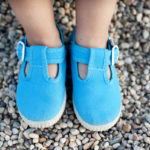Choose a Toothbrush with a Smaller, Tapered Head
Opt for toothbrushes with a smaller head that fits your mouth comfortably. This allows the brush to easily maneuver around all areas of your teeth, even the hard-to-reach spots, for a more comprehensive clean.
The toothbrush head should be round and tapered, without any sharp edges. Look for rounded corners so that the brush doesn’t cause any harm to your gums, teeth, or other parts of your mouth while brushing.

Select a Toothbrush with Soft Bristles
Dentists often recommend choosing a toothbrush with soft, smooth bristles that are moderately stiff and have good elasticity. This will help effectively remove plaque and food debris from your teeth.
Avoid toothbrushes with very hard bristles as they can damage your gums. Similarly, steer clear of brushes with extremely soft bristles as they may not effectively clean your teeth.
To find a toothbrush with bristles that meet your preferences, use your hand to feel the brush head. If it feels soft and elastic, go for it!
When choosing a toothbrush for a one-year-old child, opt for one with soft bristles, a small, tapered head to prevent causing any discomfort in the child’s mouth.

[captionnews]Feel the bristles to check for softness[/captionnews]
Choose a Toothbrush that Fits Your Hand Comfortably
For adults, the head of the toothbrush should ideally be no larger than 2 cm, and the handle should be a comfortable length for your hand.
Avoid toothbrushes with very short or very long handles as they may be inconvenient to maneuver while brushing.

Select a Toothbrush Made of Quality Materials
To ensure safety, choose a toothbrush that doesn’t release any toxic substances harmful to your health. Opt for brushes made of high-quality plastic or silicone.
To be certain of the materials used, carefully read the product’s packaging, specifically the section that lists the toothbrush’s components.
If a company doesn’t provide clear information about the materials used, or if the information is unclear, it’s best to avoid purchasing their product to prevent buying a low-quality or counterfeit item.
Additionally, opt for toothbrushes from trusted brands with positive customer feedback and certifications that guarantee the product’s quality and safety from reputable organizations, both domestic and international.
Other Considerations when Choosing a Toothbrush
-
If you’re undergoing orthodontic treatment, choose a toothbrush as directed by your dentist. Look for brushes designed specifically for braces, with longer bristles on the sides than in the middle. This design effectively cleans both your teeth and braces.

-
For those with a higher budget, consider investing in an electric toothbrush, which can be powered by batteries or electricity. Electric toothbrushes automatically vibrate in the correct direction, efficiently cleaning your teeth. When the energy runs out, simply replace the batteries or recharge the device with ease.
Using the tips provided above, we’re confident that you’ll be able to find the perfect toothbrush for your needs. If you’re unsure about which brand to choose, feel free to browse our website for further guidance.



































